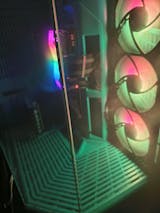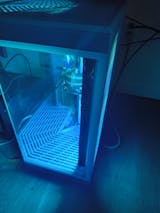The issue of obsolescence is perennially relevant in the dynamic realm of computer hardware. Serial ATA (SATA) has been an integral part of data storage and transport for many years, but its continued usefulness is an issue that has sparked discussion. This article delves into the question of whether SATA is indeed going out of style due to new technology.
The Rise of SATA
The Serial Advanced Technology Attachment (SATA) standard, which was introduced in the early 2000s, completely changed the way data was transferred between computer motherboards and storage devices such as HDDs and SSDs. This new serial interface is more economical, quicker, more adaptable than its predecessor, Parallel ATA (PATA). Several revisions have been made to SATA over the years; the most recent, SATA III, which came out in 2009, can handle data transfers of up to 6 Gb/s.
The Challenge from Newer Technologies
The introduction of novel interfaces that provide substantially faster and more efficient data transmission speeds is the main factor that might cause SATA to become obsolete. The most well-known of them is the NVMe interface, which works in tandem with the PCIe bus standard. When it comes to high-performance computing, NVMe SSDs are the way to go because of their significantly reduced latency and much better throughput compared to SATA SSDs.
M.2, a form factor compatible with both PCIe and SATA, is another technological development that is casting doubt on SATA's continued usefulness. Although M.2 devices that use the SATA protocol don't perform better than standard SATA, those that use PCIe considerably do, thereby posing a greater threat to SATA's hegemony.
SATA's Advantages and Current Use Cases
It would be hasty to declare SATA totally outdated despite these obstacles. Several benefits that SATA has maintained make it relevant:
- Compatibility and Availability: The extensive availability of compatible devices and motherboards, because to SATA's lengthy market presence, guarantees that it will continue to be used in many systems.
- Cost-Effectiveness: For customers on a tighter budget or for certain business uses, SATA devices might be a good alternative to PCIe cards because of the lower price tag.
- Sufficiency for Many Applications: In situations when the fastest data transfer rates are not absolutely necessary, the speed provided by SATA III is more than enough for many users and applications.
The Future of SATA
When competing with faster interfaces like NVMe, SATA is expected to play a supporting role in the future. Budget personal computers, supplementary storage alternatives, and some business settings where low-cost, large-data storage is more important than performance are all examples of situations where SATA can still find a home.
Currently, SATA is going through a period of transformation. Although it hasn't quite gone the way of the dodo, quicker and more efficient technologies are surely displacing it in the data storage industry. Maintaining compatibility and cost-effectiveness while coexisting with these emerging technologies will be crucial to SATA's future. The company will need to find niches to serve. The future of SATA and other data storage technologies will be defined, as always, by the trade-offs between innovative performance and useful features.














